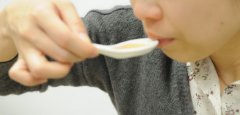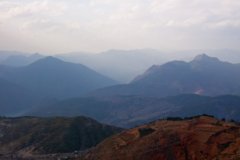What are the top ten famous tea brands in Anhui? How much is Anhui Keemun Black Tea per jin?
Welcome to Anhui Province in eastern China. We were deeply impressed when we visited a few years ago. Although it may not be the largest or richest province in China, it has world-class scenery and world-famous tea. With a population of more than 63 million, this inland province is the eighth most populous province in China. Its capital is Hefei, and Anhui is one of the most popular tourist attractions in China, mainly because of Huangshan. Mike visited China briefly when he first came to China in 1996. His memory is as vague as a tea garden in Anhui. Then Brigittte traveled with him in 2007. They visited Qimen Mountain. On their last trip in 2016, they went to Hougang Village on the bank of Taiping Lake to see the wonderful production of Taiping Lake Houkui. Then they squeezed into a resort on Mount Huangshan. Huangshan, a mountain in southern Anhui Province, is famous for its steep granite peaks, Huangshan pine trees, spectacular sunsets, hot springs and swirling clouds caused by a moist environment known as the sea of clouds. The mountain has been depicted many times in Chinese paintings and literature, and has been widely photographed. It is said that Mount Hallelujah, which was designed by James Cameron in the 2009 film Avatar, is also a UNESCO World Heritage site. Huangshan pine trees are a symbol of strength, not only because of their size and interesting shape, but also because they grow from rocks. It is normal for many pine trees to be over 100 years old, and some of the more famous pine trees, such as welcome pine, are thought to be more than 1500 years old. It is said that the trip to Huangshan without watching the sunrise is incomplete. A phenomenon called "Buddha light" occurs every month, and it is said to be worth a try. In addition, the hot springs in the region are not only pleasant, but their high concentrations of carbonate are said to be good for health. Although all this is enough to impress us with Anhui, we still want to talk about their tea here, the best of which is produced in Huangshan area. Anhui tea is as impressive as its origin.

Keemun Black Tea tea comes from Keemun Black Tea, which is one of the oldest and probably the most famous black teas in China. This kind of tea grows near the town, in the area between Huangshan and the Yangtze River. The average annual temperature in this area is suitable and Rain Water is abundant, making it a perfect place to grow tea. The undulating flat land may become quite steep, while the hills are short and chubby, far from the terraces of Wuyi Mountain, the hometown of the Zhengshan race, compared with the dramatic peaks of Darjeeling. Qimen has a charming quality, reminiscent of sugar-free cocoa, but without bitterness. Qimen tea is made from eight different types of tea trees. The best Qimen tea is harvested in spring. These elegant teas can range from very dark black to black with a soft matte gray. Anhui is famous for Keemun Black Tea, but they also produce delicious green tea, including the special Taiping Houkui, where large leaves are compressed on gauze, unlike any other green tea processing. We invite you to taste some good tea from Anhui: Maoya An is the richest Keemun Black Tea, with a hint of chocolate and roasted flavor. Keemun Black Tea is regarded as one of the best black teas in China. When soaking up Keemun Black Tea, the best grade is bud A, followed by bud b. This kind of tea is made in late spring and is of good taste and value. It is not as strong as bud An and has a warm smell of roast incense and chocolate. Qimen Xiangluo black tea. For some of our regular customers, you may remember the golden snail, this tea drives us crazy with its wonderful taste and aroma. We are always looking for something that reminds us of that cup, and this cup of tea can do it very well! Although its cup is smoother and darker than most of our other base doors, it does have that unique Qimen flavor. Anhui Xiuning pineapple. It is made near the base gate, so it has a lot of similar taste. However, the way they deal with tea is a little different. The tea is rolled into small rolls, which are quite shiny. Songluo Mountain lies between Qimen (also known as Qimen) and Huangshan in the south of Anhui Province. They ensure that the oxidation process is slow and controlled so that the delicious taste is formed within hours. In order to get shiny curly hair, high temperatures are needed during combustion while avoiding any charred or smoky smell. English breakfast. One thing you may not know: our breakfast tea in England is 100% Qimen black tea, just like the British drank in the 19th century. Taiping Houkui Tea. This is one of the best green teas in China. When we visited the lakeside village where this special tea was made, it was great to see the ladies roll up the big leaves with their hands and flatten them out. Taiping Houkui Tea is now mostly machine-made, so it's a good thing to have this kind of hand-made traditional green tea. Once again, we are pleased to share our experience from the most famous tea areas in China: Fujian, Hunan, Zhejiang, Yunnan and, of course, Anhui. If you have drunk these special teas or been to Huangshan, please share your experience in the comments below.
Important Notice :
前街咖啡 FrontStreet Coffee has moved to new addredd:
FrontStreet Coffee Address: 315,Donghua East Road,GuangZhou
Tel:020 38364473
- Prev

How should high-grade good tea taste tea? The correct method and skill of tasting tea tongue and mouth
If you want to learn more about the really complex characteristics of tea and reveal all its tastes and nuances, you can consider trying these techniques. Because to fully experience what tea has to offer, you need to participate in some rituals and a very special way of tasting tea. We warn you: if you are afraid to make strange things in front of others
- Next

What is the difference between Yunnan Yunnan black tea and Yunnan Pu 'er tea? Where to buy authentic Yunnan tea?
Welcome to beautiful Yunnan Province, our fourth and final virtual tour of one of China's major tea producing regions. Yunnan is an inland province in southwest China, bordering Guangxi, Guizhou, Sichuan, Xizang, Myanmar, Laos and Vietnam. Yunnan's capital is Kunming, which has nearly 5
Related
- What effect does Italian American coffee with filter paper have? Will coffee taste better if it is put on filter paper at the bottom of the powder bowl?
- What is the color difference in coffee beans? What are the characteristics of honey processed coffee beans? Why are the anaerobically treated coffee beans uneven in color?
- How does novice Xiaobai quickly get started and make coffee? Newbies learn to make coffee by hand and share the specific steps and process process!
- Costa tea has a shelf life of 100 years?! Expert: Unable to verify
- It's a huge uproar! American milk addition was rejected by Manner employees?!
- Mocha pot coffee bean recommendations| How fine and how much powder should be used for grinding? What parameter ratios do I need to use to make milk with Mocha pot coffee?
- What are the characteristics of the world's top ten coffee beans treated with Costa Rica honey? How to make black honey kadura from Tarazhu Pilon Processing Plant taste good?
- How to make deep-roasted coffee? What grinding water temperature does authentic Jamaica Blue Mountain No. 1 coffee use to brew it well?
- Selected high-grade rose summer coffee flavor tasting guide Why Panama rose summer has the aroma of flowers and fruits
- What equipment does a novice Xiaobai need to buy to learn to make coffee? Filter cup electronic scale bean grinder manual flushing pot purchase guide

